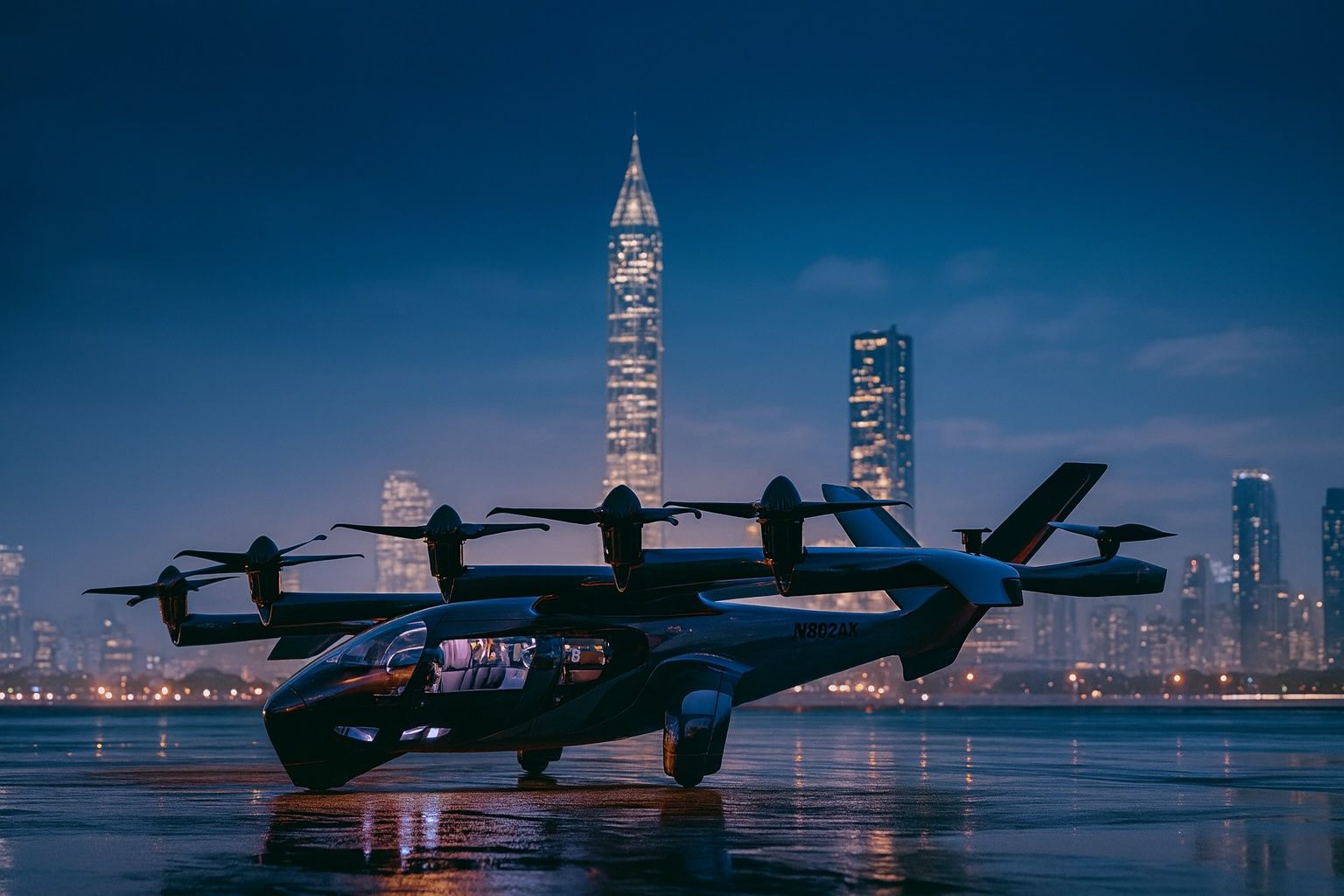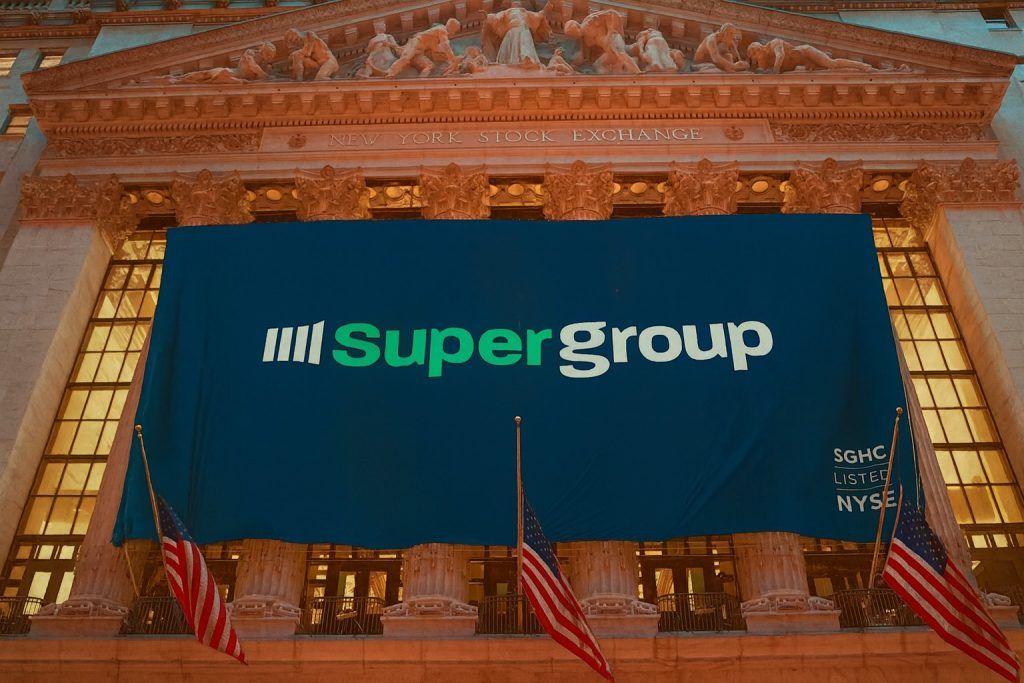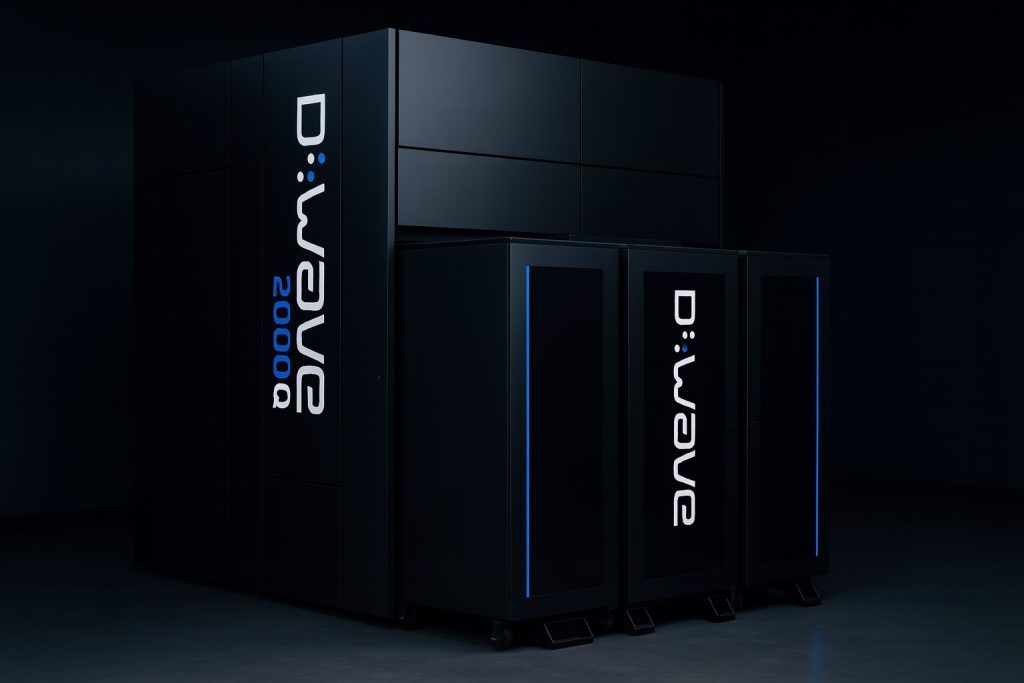- 2025 Stock Surge: Archer Aviation (NYSE: ACHR) has climbed roughly 18% year-to-date in 2025, adding to a spectacular ~287% gain over the past 12 months [1]. Recent weeks saw a sharp rally – the stock jumped 36% in the past month – bringing shares to around $11.5 and valuing Archer near $7.4 billion [2] [3].
- Analyst Optimism: Wall Street sees more altitude ahead. 7 of 9 analysts rate ACHR a “Buy”, giving a Moderate Buy consensus with an average price target around $13–14 (~15% above current levels) and bullish high-end targets up to $18 [4]. However, not everyone is on board – Zacks recently flagged Archer as a “Sell” despite its momentum [5].
- Big Partnerships & Milestones: Archer’s Midnight electric air taxi hit new milestones in 2025. The company was chosen as the official air taxi provider for the 2028 Los Angeles Olympics (LA28), planning to shuttle athletes and VIPs in flying taxis [6]. It also inked a landmark deal in Japan’s Osaka Prefecture – Archer’s Midnight was picked as the air taxi for a major Osaka air mobility project, making Archer the only U.S. eVTOL maker in that program [7]. Meanwhile, Archer completed a 400,000 sq. ft. factory in Georgia with automaker Stellantis to mass-produce Midnight aircraft starting in early 2025 [8] [9].
- eVTOL Sector Race: Archer faces fierce competition in the nascent electric vertical takeoff and landing (eVTOL) industry. Joby Aviation (JOBY), backed by Toyota, Delta and Uber, is ahead in FAA certification (already in stage 4 of 5) and boasts over 40,000 miles of test flights (600+ flights in 2025) [10]. EHang (EH) in China secured pioneering regulator approvals – its pilotless two-seater eVTOL gained the world’s first type certificate and air operator permits in China, and EHang is targeting ~¥900 million ($125 M) revenue in 2025 as it begins commercial flights [11] [12]. Lilium (LILM), by contrast, has struggled: the German eVTOL developer filed for insolvency after funding deals collapsed, highlighting the sector’s high cash burn and technical hurdles [13] [14].
- Sky-High Potential, Turbulence Ahead: Analysts project the air taxi market to soar from ~$1.3 B in 2024 to $7.7 B by 2033 [15], as urban air mobility transitions from sci-fi to reality. Yet challenges abound – no eVTOL firm is profitable and most have zero revenue today [16]. Certification delays, hefty development costs, and public acceptance are key hurdles. Investors are excited but wary: 2025’s meme-stock-like surges in ACHR and JOBY show enthusiasm, while Lilium’s crash underscores the risk of picking winners in an unproven industry [17] [18].
2025 YTD Stock Performance: Archer’s Ascent and Volatility
Archer Aviation’s stock has been on a bumpy upward trajectory in 2025. After a meteoric rise late last year, ACHR entered 2025 trading near $10 and initially stumbled – by mid-September the stock was actually down ~13% year-to-date [19]. However, a late-quarter surge flipped the script. As of early October 2025, Archer’s share price is up about 18% for the year, outpacing the S&P 500’s ~14% gain [20]. More dramatically, Archer has returned almost 290% over the past 12 months [21], reflecting the eVTOL hype cycle that sent many “flying car” stocks soaring in late 2024.
In recent trading, Archer’s stock spiked back toward 52-week highs. On October 3, 2025, ACHR closed at $11.52 (+13% in one day) amid heavy volume [22]. At this price, Archer’s market capitalization is roughly $7.4 billion [23]. Notably, even after the rally, shares remain 30% below their 2025 peak, according to Motley Fool analysis [24], suggesting significant volatility. Indeed, Archer’s stock has twice suffered 30% drawdowns this year in the wake of dilutive capital raises and industry news [25]. The recent rebound – shares jumped over 35% in the last month [26] – coincided with bullish news (discussed below) and a renewed investor appetite for speculative growth names.
Valuation: At ~$11.50 per share, Archer trades at a price-to-book ratio around 3.2, well below the aerospace industry average P/B of ~6.3 [27]. That relative discount reflects Archer’s pre-revenue status and the uncertainty around future earnings. By traditional metrics (like P/E), eVTOL stocks are impossible to value – Archer has no revenues (and thus no earnings) yet [28]. Investors instead price ACHR on future potential. Archer’s hefty cash position – $1.7 billion on June 30, 2025, after large Q1 funding – also factors into its valuation [29]. In fact, Archer’s cash war chest far exceeds that of rival Joby ($336 M as of mid-2025) [30], a point bulls say the market has overlooked during 2025’s price swings.
Analyst Forecasts and Expert Commentary on ACHR
Wall Street sentiment toward Archer has warmed considerably alongside its execution progress. In the past year Archer raised substantial capital and hit key development targets, leading many analysts to initiate or upgrade coverage. Currently, 7 out of 9 analysts covering ACHR recommend “Buy”, with 1 “Hold” and 1 “Sell” [31]. The consensus 12-month price target is ~$13.43 [32], implying modest upside from current levels. Notably, the highest target sits at $18 and the lowest at $10 [33] – a wide range reflecting uncertainty in Archer’s outlook. Research firm Needham in August reiterated a Buy rating with a $13 target, calling for ~13% upside as Archer moves toward commercialization [34].
Several analysts highlight Archer’s strong strategic partnerships and liquidity as distinguishing factors. “Archer ended Q2 2025 with $1.724 billion in liquidity after an $850 million raise, funding certification and production ramp-up,” noted one stock analysis report [35]. This cash runway, plus alliances with United Airlines, Stellantis, and the U.S. military (discussed later), gives Archer “a solid foundation to execute its bold plan,” according to experts. The Motley Fool has featured Archer frequently in 2025, even dubbing it “my top stock pick for 2025” in one contributor’s piece [36]. Fool.com analysts argue that “Archer offers a compelling combination of strong execution, strategic partnerships, and multiple revenue paths”, citing its progress on both civil air taxis and defense projects.
However, not all experts are bullish. Zacks Investment Research recently assigned Archer a Rank #4 (Sell), cautioning that despite Archer’s gains, its 2025 and 2026 earnings estimates remain deep in the red [37]. The Zacks report praised Archer’s technology and share price momentum, but flagged the lack of revenue and ongoing losses as reasons the stock might be overheated. This divergence in opinion underscores the speculative nature of eVTOL investing – projections vary widely depending on assumptions about regulatory timing, market adoption, and Archer’s ability to scale production.
Even industry peers have weighed in on Archer’s trajectory. In a recent Benzinga interview, rival Joby Aviation’s team indirectly contrasted their approach to Archer’s. Joby contends its vertical integration is a key advantage: “We design and build our aircraft in-house, from components to flight software,” the company told Benzinga, implying that competitors (like Archer) who rely more on partners could face supply chain or IP challenges [38]. Joby’s CEO also emphasized being further along in testing and certification: Joby has logged 40,000+ flight miles and is in the 4th of 5 FAA certification stages, aiming for first commercial air taxi service by 2025 [39]. By comparison, Archer is just entering FAA testing of its pre-certification aircraft. Some analysts worry Archer might be “a year behind Joby” in timelines – a gap Archer will need to close to meet its 2025 launch goal.
Overall, the analyst consensus leans positive on Archer Aviation’s future. A MarketBeat analysis summarized that Archer has a “Moderate Buy” rating and an average target ~$13-14, or ~16% above recent prices [40]. Bulls see Archer as undervalued relative to peers (given its cash and partnerships) and poised for a “catch-up trade” after lagging Joby’s stock in 2025 [41] [42]. As one analyst put it, “Barring any unforeseen events, ACHR stock has the potential to catch up to JOBY… it’s speculative, but then, everything about the air taxi industry is speculative” [43]. That sentiment captures both the huge upside and high risk that define Archer’s investment case.
Recent News: Archer’s Milestones, Partnerships, and Progress
Archer Aviation has made headlines throughout 2025 with a string of notable milestones in technology, partnerships, and regulatory progress. These developments underpin investor optimism that Archer’s bold vision of flying taxis is nearing reality. Below we recap the most significant recent news about Archer and its Midnight eVTOL program:
- Record Flight Tests & Public Demonstrations: Archer’s prototype Midnight aircraft has been undergoing an intensive flight test campaign. In September 2025, Archer announced Midnight achieved its highest altitude flight to date – 7,000 feet – during a 45-mile test run [44]. This validates Midnight’s performance envelope (critical for FAA certification). Archer is also bringing its eVTOL to the public: on October 4–5, 2025, Midnight is slated to perform public demonstration flights at the California International Air Show in Salinas [45] – a high-profile showcase following Midnight’s “record flight test achievements.” Such demos aim to build public awareness and acceptance of eVTOL technology.
- Manufacturing Ramp with Stellantis: A major 2024 milestone bearing fruit in 2025 is Archer’s new manufacturing facility in Covington, Georgia, built in partnership with automaker Stellantis. In December 2024 Archer completed construction of this 350,000–400,000 sq. ft. factory (dubbed “ARC”) and received its certificate of occupancy [46] [47]. Stellantis, the parent of Chrysler and Jeep, is contributing capital and expertise as Archer’s exclusive contract manufacturer, with the goal of mass-producing up to 650 Midnight aircraft per year by 2030 [48] [49]. Production is slated to begin in early 2025, starting at a modest rate (Archer aims for 2 aircraft per month by end of 2025 [50]). Ramping from hand-built prototypes to an assembly line is a critical step for Archer; the partnership with an auto-industry giant like Stellantis lends credibility to Archer’s scaling plans. Archer’s CEO Adam Goldstein hailed the facility’s completion as proof that “the industry [is] shifting from R&D into commercialization… From here, it’s all about execution and scaling” [51].
- United Airlines & U.S. Route Initiatives: Archer’s first announced customer, United Airlines, remains a key partner in 2025. United has placed a $1 billion order for 100+ Archer aircraft (with an option for more) [52], aiming to deploy air taxis for short connections like downtown to airport routes. In 2025 Archer and United continued route planning for launch cities (New York and Los Angeles are prime candidates). Archer also secured its FAA Part 135 Air Carrier Certificate in August 2023 [53], then in early 2025 received Part 141 certification to launch a pilot training academy [54]. Having Part 135 (which Joby also has) means Archer can operate commercial flights once it has certified aircraft – an important regulatory checkbox. In July 2025, Archer was one of only a few companies selected for a White House FAA pilot program to test eVTOL operations in U.S. cities [55]. Archer’s inclusion in this federal pilot program signals government support for the technology, though some investors viewed it cautiously (as “buzz” that doesn’t change fundamental timelines [56]).
- LA28 Olympics Partnership: In May 2025, Archer announced an exclusive partnership with the Los Angeles 2028 Olympic and Paralympic Games. Archer has been “selected as the Official Air Taxi Provider of the LA28 Olympics” [57]. This means Archer’s Midnight aircraft are expected to be showcased during the 2028 Games, potentially ferrying Team USA athletes, VIPs, and event attendees across Los Angeles. The deal is a marketing coup – effectively an endorsement by the Olympic organizers – and could coincide with Archer’s first large-scale commercial deployment if all goes to plan. The LA28 committee noted Archer’s eVTOL will integrate into the Games’ transportation plan to help alleviate LA traffic with zero-emission flights [58]. While 2028 is beyond most investment horizons, this milestone underscores Archer’s ambition and provides a concrete target for having a fleet in operation by that year.
- International Expansion – Japan’s Osaka and More: Archer is also laying groundwork abroad. In late September 2025, Archer announced that Osaka Prefecture in Japan chose Archer’s Midnight as its eVTOL solution for future air taxi services [59]. Osaka’s government named a joint venture called Soracle (between Japan Airlines and Sumitomo Corp) to lead its urban air mobility rollout – and Soracle committed to deploy Archer’s Midnight as the core of its fleet [60]. This makes Archer the “only U.S. eVTOL manufacturer” in Osaka’s program [61] and represents a potential 300-aircraft order (according to media reports) in the coming years. Archer’s CEO met with Japan’s Minister of Transport in 2025 to solidify support [62] [63]. Additionally, Archer has a launch partnership in the UAE: in 2024 it formed an alliance with Abu Dhabi’s aviation firm to introduce air taxis there, and notably conducted a test flight in Abu Dhabi’s desert climate in 2025 [64]. Archer also struck an agreement with Jetex, a global private aviation services company, to equip 40+ vertiport terminals in 30 countries for Midnight operations [65]. These moves indicate Archer’s strategy to pursue international markets (Middle East, Asia) alongside its U.S. launch – potentially tapping regions with receptive regulators or urgent transportation needs.
- Defense and Military Pivot: Facing the long timeline for urban air taxi adoption, Archer in late 2024 opened a second avenue: defense contracting. In Dec 2024 Archer partnered with Anduril Industries (a defense tech firm) to co-develop a hybrid-electric VTOL aircraft for the U.S. Department of Defense [66]. To support this, Archer raised $430 million in additional equity at the end of 2024 [67]. In Feb 2025, Archer raised another $301.8 million earmarked partly for its defense program [68]. Then in August 2025, Archer made two strategic acquisitions: it bought a patent portfolio and key engineers from Overair (an eVTOL startup known for tilt-rotor tech) and acquired a 60,000 sq. ft. composites manufacturing facility from a company called Mission Critical Composites [69]. These acquisitions bolster Archer’s engineering talent and in-house fabrication capabilities for military-grade aircraft. The U.S. military is investing heavily in unmanned and advanced aviation; the Pentagon’s 2026 budget allocates $13.4 billion for autonomous systems, a pool Archer hopes to tap [70]. By pivoting to defense (which offers nearer-term revenue potential via R&D contracts and small fleet orders), Archer is diversifying beyond the nascent urban air taxi market [71]. This strategy could provide stable income and tech spillovers – for example, Archer’s future eVTOL for defense (possibly a longer-range, hybrid-powered craft) might also inform its next-gen commercial models.
In short, 2025 has been an execution-heavy year for Archer. The company is ticking off items on its roadmap: test flights, factory build-out, certifications, and marquee partnerships in both commercial and military realms. Each success de-risks some aspect of the business, but significant work remains (not least achieving FAA type certification, see below). Still, these news events paint Archer as one of the best-positioned players in a field that’s moving from concept to tangible reality.
Competitive Landscape: Archer vs. Other eVTOL Contenders (JOBY, LILM, EH)
Archer is one of several high-profile startups racing to pioneer the eVTOL (electric vertical takeoff and landing) industry – essentially flying electric air taxis. To evaluate Archer’s prospects, it’s useful to compare it with a few key rivals: Joby Aviation, Lilium, and EHang. Each company approaches the opportunity with different strategies and at varying stages of progress. Below we compare their valuations, partnerships, technology maturity, and market traction:
- Joby Aviation (NYSE: JOBY):Joby is widely considered the frontrunner among Western eVTOL developers. Based in California, Joby has strong backing (Toyota Motor is a major investor/partner, and JetBlue and Intel were early backers). Valuation: With its stock near $18, Joby’s market cap exceeds $10 billion (substantially higher than Archer’s ~$7B). Technology & Certification: Joby’s aircraft is a piloted five-seat eVTOL with tilting rotors. Joby is furthest along in FAA certification – as of late 2025 it is in Stage 4 of 5 of testing, having received its FAA G-1 certification basis and begun conformity testing on prototype aircraft [72]. Joby has amassed over 40,000 flight test miles across its prototypes, including flying in diverse conditions (they did flights in California, NYC, and even Dubai for an airshow) [73]. It was also the first eVTOL to complete a public airport-to-airport flight integrated into air traffic (demonstrating it can operate in real airspace) [74]. Partnerships & Traction: Joby has a partnership with Delta Air Lines (Delta invested and plans to use Joby vehicles for airport shuttles) [75], and a deal with Uber to eventually feed into Uber’s ride-hail app [76]. It also secured a U.S. Air Force contract (Agility Prime) and has already earned a small amount of revenue (~$15,000 in H1 2025) by providing experimental flight services to DoD agencies [77]. In 2024, Joby acquired Uber Elevate and absorbed parts of that ecosystem. Production: Joby built a pilot production plant in Marina, CA and is expanding it; plus Toyota is expected to help mass-produce when ready [78]. Bottom Line: Joby’s head start in certification and deep-pocketed partners give it an edge. Indeed, Joby’s team isn’t shy about touting this – they claim their “built-in advantage rivals can’t replicate” is doing everything in-house with Toyota’s muscle, which they say will be “hard to beat… especially as scale becomes the differentiator” [79]. For now, investors have rewarded Joby with the highest valuation in the sector. But Joby’s stock, up ~68% YTD as of mid-September [80], already prices in its leadership; any setbacks (e.g. certification delays into 2026) could test that premium.
- Lilium (NASDAQ: LILM): Germany-based Lilium offers a stark contrast – it has the most radical design and has faced the most trouble. Lilium’s eVTOL is a 7-seater “Lilium Jet” using dozens of small ducted electric fans (instead of propellers or rotors) for a sleek jet-like concept. Technology Maturity: Lilium’s tech is arguably less proven – their novel propulsion led to weight and complexity issues. The company had not achieved a full-transition flight with a production-intent aircraft as of 2023, and it delayed its certification timeline to ~2025–2026 (from an original 2024 goal) [81]. Financial Distress: Lilium’s journey shows the risks in this sector. The company burned through €1.5 billion since 2015 on R&D [82]. In late 2024, Lilium filed for insolvency in Germany after a government loan fell through, halting operations and laying off 1,000 employees [83]. A temporary investor consortium tried to rescue it with €200M, but when those funds failed to materialize by Feb 2025, Lilium entered bankruptcy a second time [84] [85]. By mid-2025, Lilium’s U.S.-traded stock collapsed to penny-stock levels (~$0.03), giving it a market cap under $30 million – down over 95% in one year [86]. Partnerships/Orders: Before its collapse, Lilium had announced MOUs for orders (e.g. with Brazil’s Azul airlines, and NetJets for private jets) but those are now in limbo. The German government’s refusal to back Lilium, and the subsequent failure to raise private money, underscore a broader point: eVTOL ventures without sufficient capital or convincing progress can quickly become untenable. Lilium’s elegant concept may never reach market, serving as a cautionary tale. For Archer, Lilium’s fate is a reminder to avoid over-promising and to secure robust financing (which Archer has done).
- EHang (NASDAQ: EH):EHang is a Chinese company pursuing a different model: autonomous, small eVTOLs. EHang’s flagship, the EH216, is a two-seat drone-like aerial vehicle designed to fly passengers without a pilot on board. It’s more akin to an automated helicopter than a flying car. Technology & Certification: Uniquely, EHang prioritized the Chinese regulatory path and as a result, in 2023–2024 it achieved some world-first milestones. In early 2023, the Civil Aviation Administration of China (CAAC) reportedly granted the EH216-S the world’s first eVTOL type certification (for a passenger-grade autonomous craft) [87]. By mid-2025, two Chinese operators obtained Air Operator Certificates to start limited commercial flights with EH216-S craft [88] [89]. This suggests EHang is on the cusp of actual revenue service, likely the first in the world to carry paying passengers in eVTOLs (albeit under controlled conditions in China). Market Traction: EHang has delivered a number of units to customers – in Q1 2025 alone it sold 11 EH216 vehicles [90] for uses like tourism flights. However, its revenues are still very small (Q1 2025 revenue was ¥26 M, or ~$3.6 M [91], and the company actually saw sales drop vs. 2024). EHang is expanding production capacity with a new factory in Guangdong aiming for 1,000 units/year eventually [92] [93]. It’s also developing a longer-range VT-30 drone. Valuation: EHang’s stock has been volatile but is up ~76% year-on-year, giving it a market cap around $1.3–1.4 billion [94] [95]. That’s roughly 1/5 of Archer’s valuation, reflecting both EHang’s revenue (small, but non-zero) and the higher perceived risk of a China-based company for U.S. investors. Partnerships: EHang’s strategy often involves working with local governments for aerial tourism and emergency services. It has pilot projects in several Chinese cities, and demonstrations in Asia, Europe, and the Americas (19 countries total have seen EH216 demo flights) [96]. But EHang lacks big global corporate partners – it’s largely a homegrown effort. Bottom Line: EHang’s autonomous approach could be a leapfrog moment (removing the pilot cuts operating cost, if regulators allow it). But outside China, regulators (FAA, EASA) are likely years away from approving passenger flights without a pilot. So EHang may capture the China market early, while Archer/Joby focus on U.S. certified, piloted models. The divergent paths make EHang both a competitor and a case study: its successes in China show eVTOL’s promise (real flights with real passengers), yet its struggles (declining revenue, need for new models) highlight the challenge of turning a futuristic concept into a profitable business.
In summary, Archer stands somewhere in the middle of the pack. It’s not as far along in certification or operations as Joby or EHang in their respective domains, but it is far better capitalized and progressing faster than unfortunate cases like Lilium. Archer’s strengths include a robust balance sheet, strong partners, and a focus on a mainstream air taxi product with multiple use-cases (civil and military). Its weaknesses include being second to market behind Joby in the U.S., no revenue until at least 2025, and heavy reliance on successful certification of a single aircraft design. The eVTOL race is a long game – multiple winners could emerge globally – and Archer is positioning to be one of them, balancing the urgency to catch up to Joby with the prudence to not follow Lilium’s path into a cash crunch.
eVTOL Industry Outlook: Growth Potential and Headwinds
The broader advanced air mobility sector, encompassing eVTOL air taxis, is expected to grow rapidly in the coming decade – but it faces both exciting tailwinds and formidable headwinds:
- Market Growth Projections: Numerous studies predict explosive growth as eVTOL services commercialize. One projection sees the air taxi market expanding from ~$1.3 billion in 2024 to $7.7 billion by 2033 [97] (a ~30% CAGR over nine years). By 2040 and beyond, some bullish analysts (e.g. Morgan Stanley) have speculated the total urban air mobility market could reach $1 trillion+ if air taxis become ubiquitous. The rationale: eVTOLs could transform short travel (0–100 mile trips), tapping into the massive global commuter market with a faster, cleaner alternative to cars. Archer’s CEO often paints a vision of “traffic jams vanishing” in cities as air taxis shuttle people above congested roads [98]. That said, most agree the 2020s will be a gradual ramp-up – limited routes in select cities – rather than instant ubiquity.
- Investor Sentiment: Investor enthusiasm for “flying car” stocks has been high, but fickle. The sector’s SPAC listings in 2021 (Joby, Archer, Lilium, EHang earlier in 2019) initially drew huge interest, then many slumped in 2022 amid engineering delays. A resurgence in 2023–2024 saw stocks like Archer and Joby skyrocket (Archer’s up ~200% year-over-year [99], Joby’s up ~150% YoY [100]). Some of that was fundamental progress, but some was meme-stock style momentum – eVTOL names were heavily discussed on Reddit and saw periodic short-squeeze rallies. For instance, Archer’s float is relatively small and has attracted high short interest, fueling volatile jumps. The “fear of missing out” (FOMO) on a potentially revolutionary new industry is driving investors to place speculative bets, but at the same time, volatility is extreme. As an example, Archer’s stock fell ~11% in one day in July on an earnings report, only to soar nearly 20% in a day in October on a positive test flight update [101]. The sector’s story-rich nature means sentiment can swing quickly with news or social media buzz.
- Major Players & Partnerships: Aside from Archer’s trio of peers above, other notable eVTOL players include Vertical Aerospace (EVTL) in the UK, Beta Technologies (private, focused on cargo and Air Force contracts), Wisk Aero (Boeing and Google co-founder funded, developing a 6th-gen autonomous air taxi), Volocopter (German, targeting an air taxi debut at the 2024 Paris Olympics), and SkyDrive (Japan), among others. The industry has seen traditional aerospace giants dip their toes in – Boeing invested in Wisk, Airbus has a prototype eVTOL (CityAirbus), Embraer spun out Eve Air Mobility (NYSE: EVEX). Automakers too are interested: in addition to Stellantis with Archer and Toyota with Joby, Hyundai has an eVTOL division (Supernal). These partnerships bring validation and resources, but also competition, as multiple well-funded consortia race toward the same goal. A consolidation or shake-out is likely; not every startup will survive (as Lilium’s collapse shows). Investors are trying to identify who has the right mix of technology, timing, and capital.
- Regulatory & Public Adoption Challenges: The biggest gating factor for the industry is regulation – specifically, aircraft certification and airspace integration. In the U.S., the FAA’s evolving certification basis for eVTOLs (powered-lift category) has pushed timelines. Type Certification is the holy grail: Joby aims for 2025, Archer hopes for late 2025 [102], others likely 2026+. Any delays in certification (due to safety issues, testing setbacks, or changing rules) could postpone commercial launch by years. Even once certified, eVTOLs must earn public acceptance – convincing passengers that these novel aircraft are safe. Noise and safety are top concerns: eVTOLs are quieter than helicopters but not silent, and any high-profile accident could severely set back trust. Infrastructure is another challenge: building vertiports or rooftop pads, charging stations, and integrating with air traffic control. Companies like Archer are partnering with airports and firms like Jetex to retrofit existing heliports [103], but scaling to hundreds of flights a day will require new infrastructure and city zoning approvals. Lastly, initial pricing will be high (likely akin to helicopter charter rates); achieving the “affordable Uber in the sky” vision will take time, which could temper adoption if only the wealthy can ride at first.
- Opportunities – New Markets and Use Cases: On the flip side, eVTOLs present many opportunities beyond urban taxis. Cargo delivery, medical evacuation, and regional travel (100–200 mile hops) could all be served by variants of this technology. Archer and Joby have mostly urban focus, but Beta and others are targeting cargo/logistics, which might see earlier adoption (no passengers means fewer safety hurdles). The defense sector is another growth area: the Pentagon is actively testing eVTOLs for scouting, base logistics, and potentially air medevac. Archer’s and Joby’s military contracts could evolve into substantial revenue streams if the U.S. DoD or allies place orders for fleets of eVTOLs. Investors also anticipate potential ride-sharing revenue (akin to Uber, but through the air) and even recurring software/services if companies manage fleets for cities. In summary, while the initial market is small (pilot programs, demos, limited routes), the long-term addressable market spans multiple industries and geographies. This huge opportunity is why capital keeps flowing into eVTOL despite the risks.
Overall, the eVTOL sector in 2025 sits at an inflection point: approaching commercialization but not quite there. As a recent aviation news commentary put it, “Analysts suggest the first certified eVTOL passenger flights might not commence until late 2026 or 2027”, given the hurdles remaining [104]. The next couple of years will be crucial proving times. For investors, this means near-term news (FAA approvals, first customer flights, etc.) can significantly re-rate stocks. The long-term vision – sustainable urban air mobility networks in dozens of cities – could unlock multi-bagger returns for the winners. But the short-term reality is that 2025–2026 are about execution under scrutiny: can companies like Archer hit their targets without running out of cash or encountering a fatal setback? The industry’s promise is sky-high, but so are the expectations riding on each test flight and each regulatory milestone.
Risks and Opportunities for Archer (ACHR) Investors
Investing in Archer Aviation at this stage is not for the faint of heart. As a pre-revenue company in an emerging industry, ACHR embodies both significant upside potential and substantial risks. Here we outline the key risks and opportunities for investors considering Archer’s stock:
Key Opportunities / Bull Case:
- First-Mover Advantage in a New Industry: Archer is one of only a handful of companies globally on track to certify an eVTOL aircraft for commercial use. If it succeeds, it will help define an entirely new market. Archer doesn’t need to capture 100% market share to justify its valuation – even a slice of a multi-billion air taxi market could drive huge revenue in a few years. Being named the official air taxi of the 2028 Olympics and the Osaka World Expo initiative suggests Archer is positioning to be the brand synonymous with flying taxis in the public eye [105] [106].
- Robust Partnerships and Backing: Archer’s alliances give it credibility and resources beyond its startup size. United Airlines’ $1B order not only provides a future revenue pipeline but also expertise in route networks and aviation ops [107]. Stellantis bringing manufacturing know-how reduces production risk [108] [109]. The United States Department of Defense collaboration (via Archer’s pivot with Anduril and Air Force programs) offers non-dilutive funding and a potential early customer for military eVTOL variants [110] [111]. Few competitors have this trifecta of commercial, industrial, and government support. These partners also act as stakeholders invested in Archer’s success.
- Strong Balance Sheet (Cash Runway): Archer has over $1 billion in cash on hand [112], enough to fund operations through at least the planned 2025 commercial launch and likely into 2026. This reduces the risk of near-term dilution or distress financing. In contrast, many earlier-stage peers struggle for cash (as evidenced by Lilium). Archer’s ability to raise capital (over $700M in late 2024/early 2025 [113] [114]) shows investors’ confidence. A healthy cash buffer provides flexibility to solve technical challenges or handle regulatory delays if they arise.
- Multiple Shots on Goal: While the core thesis is urban air taxis, Archer has smartly diversified its strategy. Its Midnight aircraft has potential use-cases beyond ferrying office workers – e.g. emergency medical transport, tourism, or airport shuttles. Additionally, Archer’s work on a longer-range hybrid eVTOL for the military could spawn a second product line. That program might yield an aircraft suited for cargo or longer regional hops, opening new markets. Archer’s leadership talks of pursuing both “Archer UAM” (urban mobility) and “Archer Defense” as parallel tracks. This multi-prong approach increases the odds of finding a lucrative application even if one segment (say urban taxi) takes longer to mature.
- High Upside if Execution Succeeds: If Archer meets its ambitious goals – FAA certification by end of 2025 and commercial launch in 2025–26 – the company could transition from zero revenue to significant revenues extremely quickly. United and other tentative customers could firm up orders. Early mover advantage could allow Archer to win contracts with cities or airlines. In a blue-sky scenario a decade out, if Archer were producing hundreds of aircraft per year (approaching that 650/year by 2030 goal [115]) and operating profitable air taxi networks, today’s $7B valuation might look cheap. For context, Uber (which air taxis conceptually complement) is valued around $90B. Even capturing a small fraction of global mobility spending could justify a multi-fold increase – if Archer becomes a leading platform in this new category.
Key Risks / Bear Case:
- Regulatory and Timeline Risk: Archer’s plan hinges on obtaining FAA Type Certification for Midnight by late 2025 [116]. Any delay in certification would be a major setback. Certification testing is rigorous and unpredictable – unforeseen technical issues (e.g. with batteries, noise, software) could arise. The FAA is cautious, and it’s possible the process slips into 2026 or beyond. Since Archer cannot generate meaningful revenue until certified, a delay would extend the zero-revenue period and likely necessitate further cash burn and financing. Moreover, Archer’s business model assumes favorable operating rules (airspace corridors for eVTOLs, etc.); regulators could impose restrictions that slow deployment (like requiring pilots in each craft initially, limiting flights per hour, etc.). This risk is binary and high-impact – without certification, Archer has no product to monetize.
- No Revenue & Ongoing Losses: Archer will almost certainly continue to report heavy net losses for the next few years. In Q2 2025, Archer lost ~$95M [117], and full-year 2025 losses will likely exceed $300M. Any unexpected cost overruns (for example, redesigns from testing feedback or supply chain costs) could widen losses. With zero revenue to offset costs, Archer is in a race to start generating income before its cash runs low. Although well-funded now, continual losses mean Archer might need to raise more capital by 2026 – which could dilute shareholders, especially if the stock price weakens.
- Execution Risk – Manufacturing & Scale: Ramping up aircraft manufacturing is a non-trivial challenge. Even with Stellantis’s help, Archer targeting 2 aircraft per month by end of 2025 and then accelerating further [118] is aggressive. Unexpected bottlenecks in production – from sourcing battery cells, motors, or avionics – could slow deliveries. Archer must also build out maintenance, training, and operations infrastructure. Essentially, Archer is not just building a new plane; it’s launching an airline-like service. Scaling that safely and efficiently, in multiple cities, is a huge execution ask for a young company. There is execution risk at every step – a failed test flight, a manufacturing defect, or a service incident in early operations could severely damage Archer’s reputation and prospects.
- Competition and Market Adoption: While the market will likely be big enough for several players, competition is intense. If Joby achieves certification first (which is likely by at least a few months) and launches its service in 2025, it could gain the “first mover” halo and snap up key partnerships or vertiport locations. Archer might find itself playing catch-up in crucial launch cities. Moreover, other competitors like Eve (Embraer’s eVTOL) and Wisk might enter service by 2026–27, increasing the crowd. This could pressure pricing or make it harder for Archer to stand out unless its tech is superior or cheaper. There’s also a risk that demand for air taxis grows slower than expected. High ticket prices, safety fears, or simply the novelty needing time to win trust could mean that even once aircraft are flying, utilization is low. For example, if tourists and commuters aren’t readily booking eVTOL rides, initial routes might operate half-empty, delaying profitability. Investors should be aware that “build it and they will come” is not guaranteed; Archer and peers will have to market these services and prove value to end-users.
- Macro and External Risks: High-growth unprofitable companies like Archer are sensitive to macroeconomic factors. Rising interest rates or tight capital markets can hurt valuations and make funding more expensive. Archer’s fortunes also ride somewhat on public policy – supportive government stance (grants, favorable rules) can help, whereas any regulatory backlash (perhaps due to noise complaints or an accident elsewhere) could hurt. Also, as a hardware manufacturer, Archer faces supply chain risks (as seen during COVID, shortages of crucial components could derail timelines). Finally, one cannot ignore event risks: an accident involving any eVTOL (not just Archer’s) could cast a pall over the whole industry. For instance, in 2020 a fatal crash of a prototype from Airbus’s Vahana project raised concerns; a serious incident with a commercial eVTOL in the future could prompt regulators to halt operations sector-wide until investigations are complete.
Bottom Line: Archer Aviation offers a compelling high-reward opportunity – a chance to invest early in what could become a transformative mode of transportation. The company has made impressive strides, and experts see a “hyper-growth” trajectory for eVTOL in the long run [119]. If Archer executes to plan, early investors could see substantial gains as the company evolves from prototype to revenue-generating operator.
However, the risks are commensurately high. Archer is effectively a venture-stage company trading on the public markets. Its success is not guaranteed, and timelines could slip. Investors should size positions accordingly, be prepared for volatility, and monitor key milestones (FAA certification progress, test flight results, cash burn rates, and any early commercial agreements).
As one 24/7 Wall St. analyst aptly summarized in comparing Archer to its peers: “It’s a speculative bet, but then, everything about the air taxi industry is speculative… if I had to pick one, I’d choose Archer for the catch-up trade, while keeping tabs on Joby’s momentum” [120]. That captures the cautious optimism around Archer. The opportunity is sky-high – but it must be navigated skillfully. Archer Aviation has cleared many early hurdles; the coming year will reveal if it can truly get its electric birds off the ground and into commercial service, rewarding believers in the process, or if more turbulence lies ahead on this flight to the future.
Sources: Recent financial data and performance from MarketBeat [121] [122]; analyst ratings via MarketBeat and Benzinga [123] [124]; Archer and competitor developments reported by Business Wire, Zacks, and 24/7 Wall St. [125] [126] [127]; eVTOL industry context from AviTrader and Motley Fool [128] [129]; EHang updates from Quiver/Nasdaq summary [130] [131]; Archer press releases and SEC filings for partnerships and milestones [132] [133]. All information is up-to-date as of Q4 2025.
References
1. www.marketbeat.com, 2. www.marketbeat.com, 3. www.marketbeat.com, 4. www.marketbeat.com, 5. www.nasdaq.com, 6. 247wallst.com, 7. investors.archer.com, 8. investors.archer.com, 9. investors.archer.com, 10. www.benzinga.com, 11. www.nasdaq.com, 12. www.nasdaq.com, 13. avitrader.com, 14. avitrader.com, 15. 247wallst.com, 16. 247wallst.com, 17. 247wallst.com, 18. avitrader.com, 19. 247wallst.com, 20. ca.finance.yahoo.com, 21. www.marketbeat.com, 22. www.marketbeat.com, 23. www.marketbeat.com, 24. stockinvest.us, 25. stockinvest.us, 26. www.marketbeat.com, 27. www.nasdaq.com, 28. 247wallst.com, 29. 247wallst.com, 30. 247wallst.com, 31. www.marketbeat.com, 32. www.marketbeat.com, 33. www.marketbeat.com, 34. www.benzinga.com, 35. seekingalpha.com, 36. x.com, 37. www.nasdaq.com, 38. www.benzinga.com, 39. www.benzinga.com, 40. www.marketbeat.com, 41. 247wallst.com, 42. 247wallst.com, 43. 247wallst.com, 44. stockinvest.us, 45. investors.archer.com, 46. investors.archer.com, 47. investors.archer.com, 48. investors.archer.com, 49. investors.archer.com, 50. investors.archer.com, 51. investors.archer.com, 52. www.tipranks.com, 53. www.ainonline.com, 54. investors.archer.com, 55. stockinvest.us, 56. stockinvest.us, 57. la28.org, 58. la28.org, 59. investors.archer.com, 60. www.aaminternational.com, 61. investors.archer.com, 62. investors.archer.com, 63. investors.archer.com, 64. www.tipranks.com, 65. www.tipranks.com, 66. www.nasdaq.com, 67. www.nasdaq.com, 68. www.nasdaq.com, 69. www.nasdaq.com, 70. www.nasdaq.com, 71. www.nasdaq.com, 72. www.benzinga.com, 73. www.benzinga.com, 74. www.benzinga.com, 75. www.benzinga.com, 76. www.benzinga.com, 77. 247wallst.com, 78. www.benzinga.com, 79. www.benzinga.com, 80. 247wallst.com, 81. verticalmag.com, 82. avitrader.com, 83. avitrader.com, 84. avitrader.com, 85. avitrader.com, 86. macrotrends.net, 87. ir.ehang.com, 88. www.nasdaq.com, 89. www.nasdaq.com, 90. www.nasdaq.com, 91. www.nasdaq.com, 92. www.nasdaq.com, 93. www.nasdaq.com, 94. stockanalysis.com, 95. stockanalysis.com, 96. www.nasdaq.com, 97. 247wallst.com, 98. stockinvest.us, 99. www.aol.com, 100. www.benzinga.com, 101. www.marketbeat.com, 102. markets.financialcontent.com, 103. www.tipranks.com, 104. avitrader.com, 105. 247wallst.com, 106. investors.archer.com, 107. www.tipranks.com, 108. investors.archer.com, 109. investors.archer.com, 110. www.nasdaq.com, 111. www.nasdaq.com, 112. www.tipranks.com, 113. www.nasdaq.com, 114. www.nasdaq.com, 115. investors.archer.com, 116. markets.financialcontent.com, 117. www.tipranks.com, 118. investors.archer.com, 119. 247wallst.com, 120. 247wallst.com, 121. www.marketbeat.com, 122. www.marketbeat.com, 123. www.marketbeat.com, 124. www.benzinga.com, 125. investors.archer.com, 126. www.nasdaq.com, 127. 247wallst.com, 128. avitrader.com, 129. 247wallst.com, 130. www.nasdaq.com, 131. www.nasdaq.com, 132. investors.archer.com, 133. www.tipranks.com







